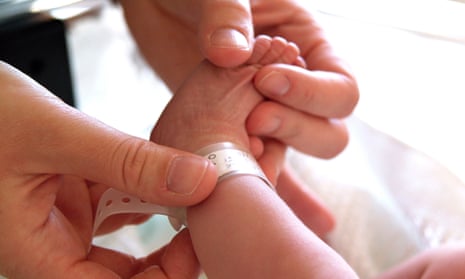The increase in UK infant mortality over the past two years, after more than a century of decline, is the starkest indicator of how we are failing to support the physical and mental wellbeing of children and young people.
The frightening implications for individual families and the long-term pressures on the public sector have been spelt out by the Royal College of Paediatrics and Child Health, which on Monday published its projections of likely outcomes for child health up to 2030. The study compares the UK with the EU15+, comprising 15 long-standing EU members plus Australia, Canada and Norway. It shows that by 2030 the UK infant mortality rate will be 80% higher than the EU15+, even if the country resumes its previous downward path. If we carry on as we are, the rate will be 140% higher. As always, the impact is greatest among the poorest.
To put this into context, United Nations’ estimates of infant mortality indicate that only about six other countries have had increases over the past two or three years. We are keeping company with Dominica, Grenada and Venezuela.
We give children a bad start in life. Smoking rates among pregnant women are high. Breastfeeding rates are low by international standards. We have high death rates from preventable conditions such as common infections and chronic respiratory conditions such as asthma. Diabetes control among children and young people is poor, although concerted efforts by the NHS are delivering improvements. The childhood obesity data continues to shock, with 22% of boys and 18% of girls obese at 11 years old.
Poor beginnings are compounded as children grow. As many as 1,000 Sure Start children’s centres may have closed since 2010, stripping away early years support for children from the poorest homes. Remaining centres struggle to cope. Norfolk county council reflects the national attrition, with plans to shut 46 of its 53 remaining centres.
The relentless cuts to local government have increased the risks facing the most vulnerable. Child protection services are increasingly being driven to wait until a child is in crisis before intervening. This puts children in danger, increases family break-ups and drives up the long-term costs to public services as people struggle to cope in later life with the aftermath of avoidable trauma. Cuts in services addressing domestic violence and addiction put more children in harm’s way.
The government trumpets its plans for expanding mental health services for children and young people, and the political focus is making a difference. But it is poor compensation for the 4.5 million children living in poverty. The commitments are modest compared with the scale of the problem, there are serious concerns about whether the promises will be delivered, and support is often disrupted as children move into adulthood. Even on optimistic estimates, almost two-thirds of children who need NHS mental health services are still unlikely to be getting them by 2021 because there is neither the money nor the staff.
Despite the often overwhelming pressures, some parts of the public sector still managing to strengthen their support for children. Croydon health services NHS trust, for instance, is trying to provide mothers with greater support in the first two years, through measures such as identifying and addressing attachment issues early, tackling postnatal depression and addressing problems with drink, drugs and domestic violence.
North Yorkshire county council’s children’s services is also working to support children and families, and Ofsted recently rated them as outstanding. They are reaching children and families in good time who need help, understand risks and dangers and have an impressive record at protecting children from sexual and gang-related exploitation.
Croydon, North Yorkshire and many other parts of the public and voluntary sectors show that even in the midst of sustained and debilitating cuts, dedicated staff can still find ways to deliver excellence.
But no amount of hard work and inspirational leadership can compensate for the systematic dismantling of public services. The stalled progress in infant mortality is proof that growing numbers of people are being left in distress, and inequalities in wellbeing and opportunity are being driven ever wider.

